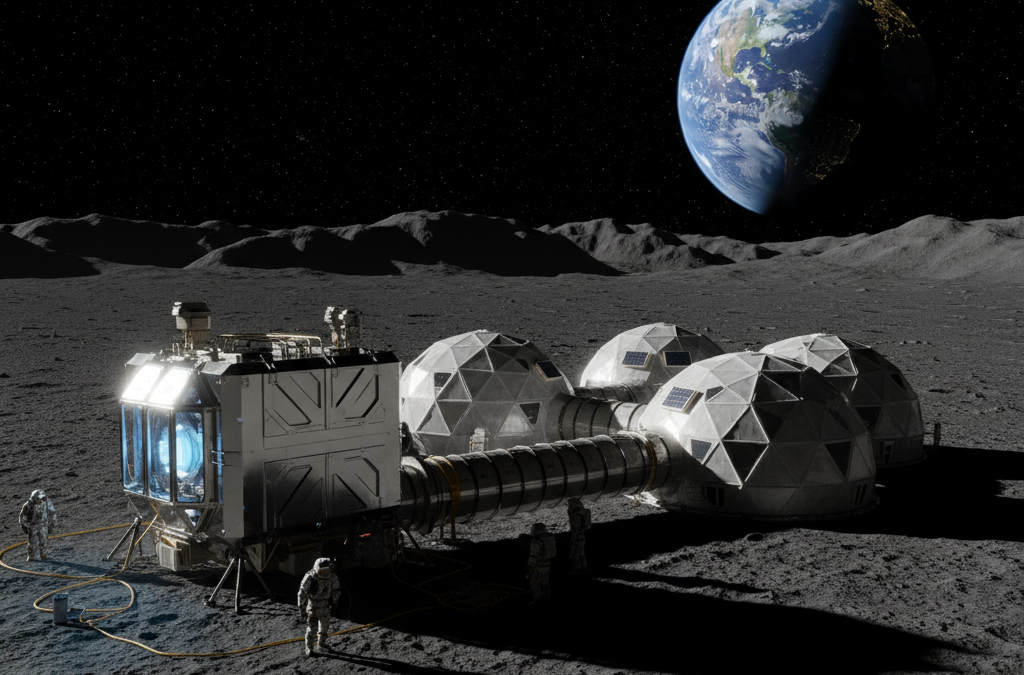The cosmos is a vast and awe-inspiring tapestry, filled with celestial wonders. Among these, stars hold a special place, radiating light and heat, illuminating the darkness of space. But have you ever wondered how stellar evolution occurs, detailing how stars are born, how they live, and how they eventually meet their demise?
[ez-toc]
This intricate process is known as stellar evolution, a captivating cosmic journey that spans billions of years, encompassing a series of transformations.
We also Published
- Coordinated Lunar Time: A New Time System for the Moon – NASA
NASA is developing a new time system for the Moon, Coordinated Lunar Time (LTC), to ensure precision for future missions. Learn about the challenges of timekeeping on the Moon, Einstein’s theory of relativity, and the global collaboration needed for this groundbreaking initiative. - Earth’s Distant Future: A Glimpse into Our Planet’s Fate – Exploring the Cosmic Timeline
Explore the captivating story of a distant planet orbiting a white dwarf, offering a glimpse into Earth’s potential future. Learn how this discovery unveils the dramatic evolution of stars and their influence on planetary systems, including our own. - A Short History of Botany: Tracing the Roots of Plant Science
Discover the evolution and milestones in A Short History of Botany. Explore how plant science has transformed over centuries.
From Stellar Nurseries to Fiery Birth
Stars are born within vast, swirling clouds of gas and dust known as nebulae. These cosmic nurseries provide the raw materials for star formation. As these clouds collapse under their own gravity, the density and temperature increase, creating a protostar – a nascent star still gathering mass.
As the protostar continues to grow, its core reaches a critical temperature and pressure. This triggers nuclear fusion, a process where hydrogen atoms fuse together to form helium, releasing immense energy that ignites the star and marks its birth. The newly born star enters the main sequence, a stable phase where it spends most of its life, balancing the inward force of gravity with the outward pressure from nuclear fusion.
The Stellar Life Cycle: A Journey of Transformation
The life span of a star is determined by its initial mass. Massive stars live fast and die young, while smaller stars have longer, more leisurely lives. The main sequence is a period of equilibrium, where the star’s internal pressure and gravity remain balanced. During this time, stars like our Sun continue to fuse hydrogen into helium in their cores.
As the star ages, it gradually exhausts its hydrogen fuel. This triggers a series of transformations. The star’s core contracts, increasing its temperature and pressure. This leads to the fusion of helium into heavier elements, such as carbon and oxygen. The star expands into a red giant, becoming cooler and larger, engulfing its surrounding planets.
“The stars are not dead, they are only sleeping.”
– Native American Proverb
The End Game: Stellar Death
The final fate of a star depends on its mass. Smaller stars like our Sun will shed their outer layers, forming a planetary nebula, leaving behind a dense, hot core known as a white dwarf. White dwarfs are the remnants of stars that have exhausted their nuclear fuel and have contracted to a very small size. They are incredibly dense, containing the mass of a star in a volume the size of Earth.
However, for more massive stars, the end comes with a dramatic bang. As their cores run out of fuel, they collapse rapidly, triggering a powerful supernova explosion. Supernovae are among the most energetic events in the universe, releasing vast amounts of energy and light, scattering heavy elements into space.
The remnants of massive stars can take on various forms. A core that collapses beyond a certain limit can become a neutron star, an incredibly dense object where electrons and protons combine to form neutrons. Neutron stars are extremely small, but they have incredibly strong gravitational fields.
If the core collapses even further, it can form a black hole, a region of spacetime where gravity is so strong that nothing, not even light, can escape. Black holes are enigmatic objects, still not fully understood, but they are believed to play a crucial role in the evolution of galaxies.
Stellar Nucleosynthesis: The Cosmic Alchemy
Throughout their life cycle, stars are constantly transforming lighter elements into heavier ones. This process, known as stellar nucleosynthesis, is responsible for the creation of the elements that make up our planet and ourselves. Stars act as cosmic furnaces, forging heavier elements from lighter ones.
The fusion reactions in a star’s core produce a wide array of elements, including carbon, oxygen, nitrogen, and even heavier elements like iron. When massive stars explode as supernovae, they scatter these newly formed elements into space, seeding the interstellar medium with the building blocks of future stars and planets.
The Importance of Stellar Evolution
Stellar evolution is not just a fascinating cosmic process. It is also a fundamental aspect of our existence. Without the birth, life, and death of stars, our universe would be a very different place. Stars provide the light, heat, and energy that make life possible on Earth. They are the source of the heavy elements that make up our planet and ourselves.
Understanding stellar evolution helps us understand the history of our universe, the origin of the elements, and the potential for life elsewhere in the cosmos. It is a testament to the power and beauty of nature, reminding us that even in the vastness of space, there is order, change, and a delicate balance.
Exploring the Stellar Universe
As we continue to explore the cosmos, our understanding of stellar evolution will continue to deepen. Telescopes and spacecrafts are pushing the boundaries of our knowledge, revealing new insights into the life cycles of stars and their role in the grand scheme of the universe.
The study of stellar evolution is not just about understanding the stars themselves. It is also about understanding our own place in the universe and our connection to the cosmos. The stars are not just distant lights in the sky; they are the building blocks of everything we see, hear, touch, and smell. They are part of our story, our history, and our future.
RESOURCES
- Stellar Evolution Physics
- 3D stellar evolution: hydrodynamic simulations of a complete …
- Stellar Evolution Theory (SET) – HITS
- Stellar Evolution
- Stellar evolution | astronomy
- Astronomy Lecture Notes – Stellar Evolution
- Stellar Evolution: A Journey with Chandra
- Stellar evolution – CESAR’s Booklet
- Stellar Evolution – an overview
- Introduction to stellar evolution
- Stellar Evolution: The Life Cycle of Stars








0 Comments